Cutworms are not worms, but rather caterpillars, that is, the larval stage of a various moths that are typically brown or gray. Cutworms are so named because they feed on the stems of seedlings and young plants, cutting them off at or just below the soil level. They can also cause considerable damage by feeding on the roots and leaves, eventually working their way to the top of the plant. Cutworms will also burrow into fruits and potatoes and view the entire garden as a veritable smorgasbord. Crops like spinach, lettuce, Swiss chard, celery, potatoes, carrots, broccoli, peppers, tomatoes, cabbage, and cauliflower are all on the menu.
How to Identify
Cutworms measure in length between one and two inches long and vary in color from pink, yellow, green, gray, light brown, and black. They may be solid or marked with spots or stripes. Black cutworms (Agrotis ipsilon), for example, have dark bodies with small dark spots, while variegated cutworms (Peridroma saucia), are mottled brown with a faint white stripe running down their backs. Spotted cutworms (Xestia c-nigrum), on the other hand, are light brown with dark triangular spots flanking several segments on their backs.
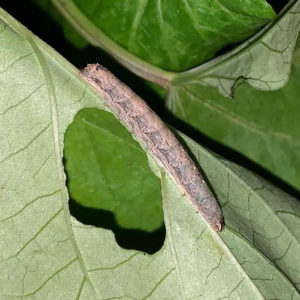
Where to Find Cutworms
Cutworms are nocturnal so you may not find them on your daily garden patrol. Instead, they will burrow into the soil and curl up during the day, coming out at night or sometimes on cloudy days to feed. Telltale signs include plants whose stems have been cut off at the soil level, wilted plants, leaves that have been eaten, and cutworm droppings.
Life Cycle
The majority of cutworm species overwinter in the pupae or partial larvae stage. They will go through several instars (stages) before reaching adulthood. Overwintering larvae and the first generation stages are the most destructive to your garden.
Like the larval stage, adult moths are also nocturnal. Adults measure approximately 1.5″ long with a wingspan of 1.5″. While the adults do not harm plants directly, the females lay up to several hundred eggs during their lifetime in plant debris, woodpiles, or soil. Depending on the species, some eggs will hatch in the spring and summer, while others will hatch during the fall.

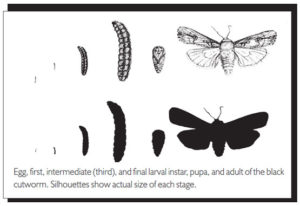
How to Prevent Cutworms from Infesting Your Garden
1. Clean the garden and surrounding area by removing plant debris, weeds, tall grass, woodpiles, etc. where moths lay their eggs and where larvae can overwinter.
2. Delay planting your garden in the spring by a few weeks. This will deprive the cutworms of the young plants and seedlings they so enjoy. You can also implement succession planting to increase the chances of a cutworm-free harvest.
3. Invite natural predators into your garden. Birds and toads, as well as, parasitic wasps and green lacewings are natural predators of soft-bodied insects like cutworms. By providing natural habitats and a source of water, these predators will make your garden their home and help keep it free of cutworms and other unwanted insects.
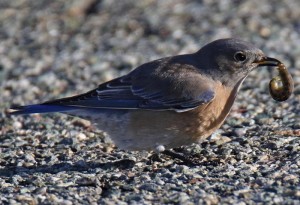
4. Turn over the soil before planting. Since cutworms hide in the soil, it can be helpful to turn over your garden beds or larger garden areas. The exposed larvae then become tasty treats for birds or chickens, if you have them. If you live on a homestead, another option would be to let your pigs root in the garden. Not only will they till the area for you, but they will also eat the larvae.
5. Plant sunflowers as a trap crop. Not only do leaf-footed bugs love sunflowers, but cutworms do also. The caterpillars will be drawn to the sunflowers, making it easier to find them. You can then pick them off and dispose of them.
This article contains affiliate links. If you make a purchase using one of these links, I will receive a very small commission at no additional cost to you, and it will help me maintain this website. Rest assured, I only recommend products I actually like!
6. Install a row cover to prevent moths from laying their eggs on your plants. Row covers will still allow air and sunlight to reach the plants, but will keep unwanted insects out. You will need to remove it once the plants flower if you want pollinators to access to the blooms. Alternatively, you can hand pollinate the plants as necessary and reinstall the row cover afterwards.
7. Apply a thick layer of mulch. It will act as an abrasive to discourage cutworms from burrowing in the soil.
8. Regularly inspect your garden for cutworms. Catching a situation before it develops into a problem is one of the best ways to manage your garden. Therefore, you should ideally inspect your garden at least once a day/night for unwanted pests and diseases.
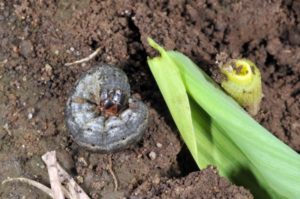
How to Get Rid of Cutworms Organically
Despite efforts to prevent cutworms from inhabiting your garden, sometimes nature just happens. If that is the case, here are several organic methods for getting rid of these destructive little caterpillars:
1. Remove cutworms by hand. This is one of the easiest, safest, and most cost-effective methods for eliminating cutworms. Since cutworms are nocturnal, you will need to do this with a flashlight at night when they are active. Place the cutworms in a container of soapy water to kill them. Repeat every few nights until they have been eliminated.
2. Install plant collars to keep the larvae from reaching the plant’s stem. Cut a slit in a 4″ section of a cardboard paper towel tube. Encircle the plant’s stem and tape the tube closed so cutworms cannot get through. Make sure the tube is inserted at least one inch into the soil. Alternatively, cut the top and bottom out of a milk carton, can, plastic container, or other similar item and slip it over the plant. Some report success using aluminum foil to fashion a collar. Plant collars work best in smaller gardens otherwise the process may be too time-consuming in larger gardens.
3. Release beneficial nematodes into your garden. Nematodes are microscopic predator worms that enter the cutworm’s mouth or anus where they release a bacteria that feasts on its host, killing it in a matter of one or two days. Nematodes work on eggs and larvae as well. An additional benefit is that the nematodes will also protect your garden against other pests. Beneficial nematodes should not be confused with harmful ones like the root knot nematode.
4. Release Trichogramma, a.k.a. predator wasps, which will lay their eggs inside the soft-bodied cutworms. When the eggs hatch, they will eat their way out, effectively killing the cutworms.

5. Diatomaceous earth or DE for short, is a naturally occurring sediment composed of microscopic fossils that have been ground up. When insects come into contact with the fine powder, the microscopic sharp edges scrape their exoskeleton causing the pest to dehydrate. Be sure to use food-grade DE, which is not harmful to pets or humans. However, take caution when applying it as you do not want to inhale the powder or get it into your eyes as it may cause irritation. Apply DE to the base of your plants, taking care not to apply on flowers since it will harm pollinators such as bees. You will need to reapply if it gets wet.
6. An application of coffee and crushed eggshells may be an effective alternative to diatomaceous earth as the jagged edges are said to cut the soft-bodied cutworms and cause them to die.
7. Apply cornmeal to the base of the plants. Cutworms reportedly can’t resist the cornmeal which, when eaten, will disrupt the cutworm’s digestive system, causing them to die.
8. Apply molasses, sawdust and wheat bran. Mix the ingredients to form a thick paste and apply it in a circle around the base of the plants. Reportedly, the mixture will get stuck to the cutworms’ bodies where it will dry and limit their mobility.
9. Apply neem oil. Neem oil will coat the eggs and prevent them from hatching.
Once cutworms have been discovered in your garden, you will need to act to prevent an infestation. Chances are you may have to employ more than one method to eliminate them completely.
Cutworms can pose a threat to any garden. But by implementing these preventative measures and organic treatment methods, you can control and or eliminate them altogether.
Thank you for reading this article! If you found it helpful, please consider sharing it with others via email or social media!


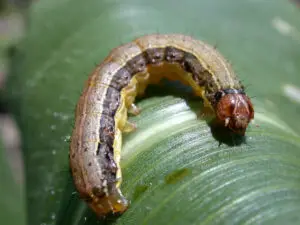
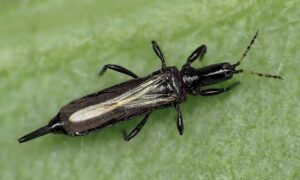
I have 30 okra plants. 2 of them have severe cutworm damage, the rest seems fine. Do all my plants have to be treated?
Hi Molly. Chances are there are more cutworms in various stages lurking nearby, probably in the soil. So it would be prudent to take preventative measures just to make sure the problem is under control. Best wishes!